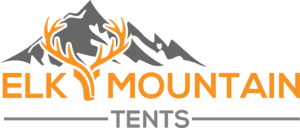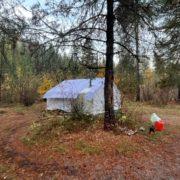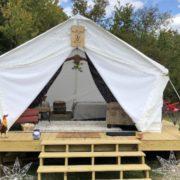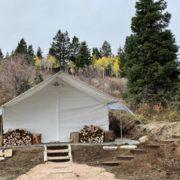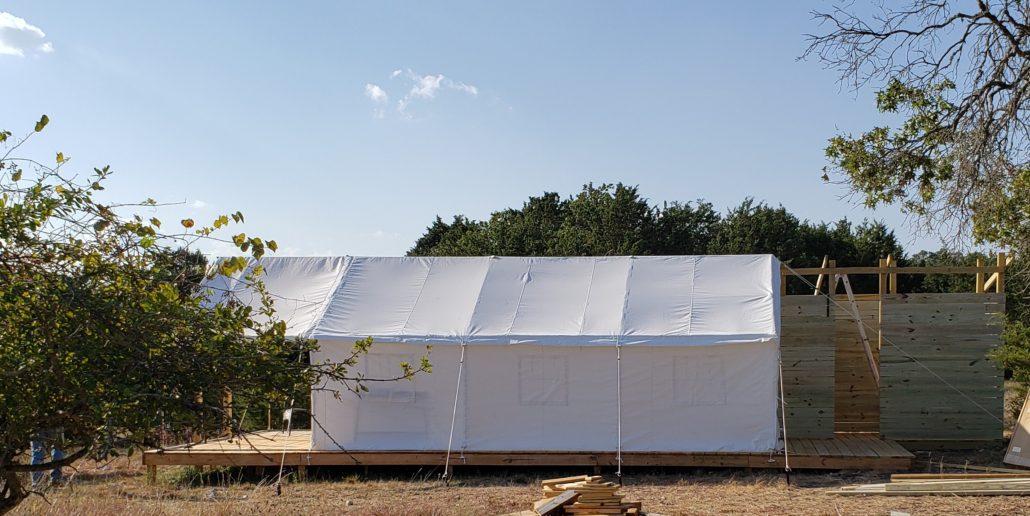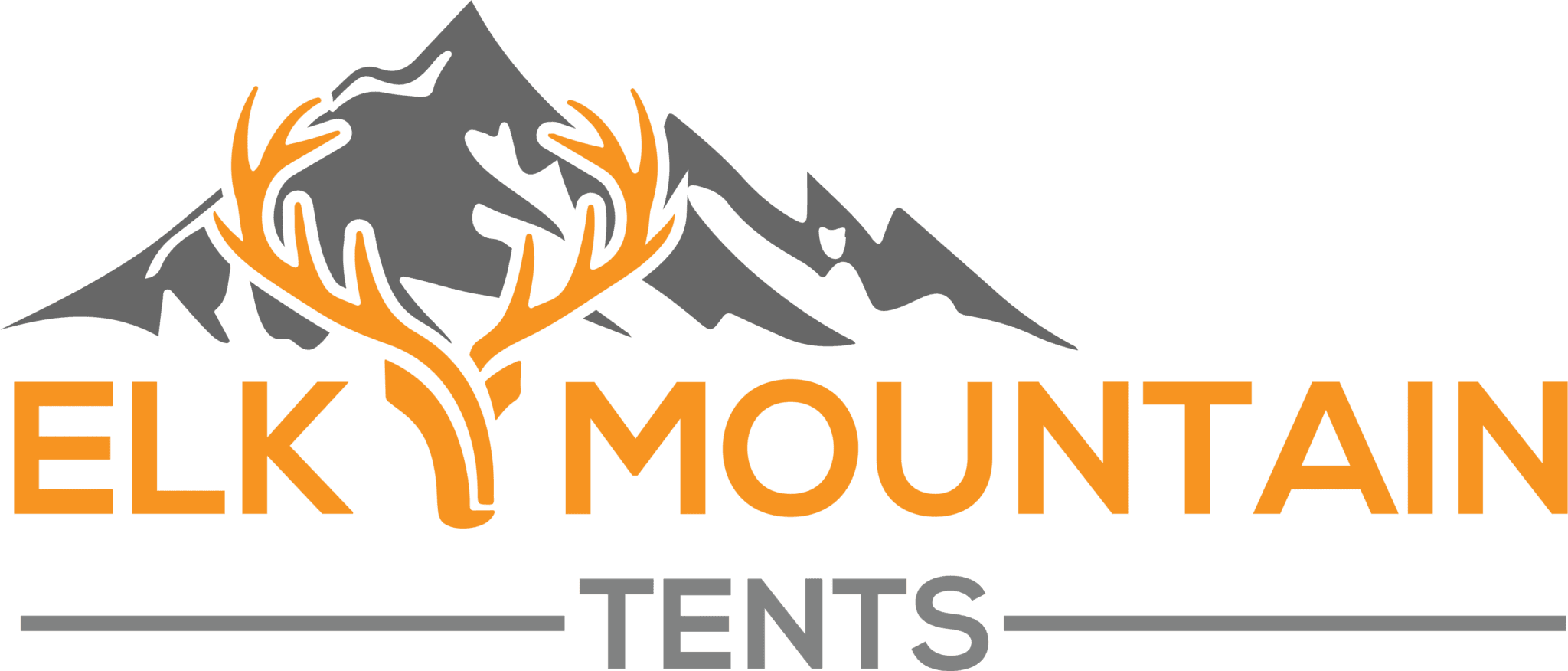How to Waterproof a Canvas Tent in 6 Simple Steps: A Guide by Elk Mountain Tents
Elk Mountain Tents is a company that specializes in high-quality canvas tents designed for outdoor enthusiasts. Their products are built to withstand the toughest conditions. In fact, the canvas used in all models of tent sold by Elk Mountain Tents are naturally waterproof and require no additional sun or mold treatments. While getting a rainfly will protect ANY tent and is recommended for every tent, this article is mostly for those who have purchased a cotton canvas tent which requires a little more care.
Step 1: Clean the Tent
The first step to waterproof canvas tents is to ensure that it is clean. Any dirt or debris on the tent’s surface can prevent the waterproofing solution from adhering properly. To clean the tent, use a soft brush or cloth and warm water. Avoid using any harsh cleaning agents that can damage the tent’s fabric. If the tent has any stubborn stains, use a mild soap solution and rinse it thoroughly to remove all the soap residues.
Step 2: Dry the Tent
Once the tent is clean, it’s essential to let it dry completely before applying any waterproofing solution. A wet tent can trap moisture inside, leading to mildew and mold growth, which can weaken the tent’s fabric over time. Set up the tent in a well-ventilated area and let it air dry. Avoid using any heat sources, such as a heater or a hairdryer, to speed up the drying process, as this can damage the tent’s fabric.
If this is the first time using your cotton tent and you haven’t already weathered the tent before, you’ll want to make sure it gets completely wet and then completely dry before moving onto the next step. This process, called weathering, forces the tent shrink a little on your own terms rather than naturally over time. This is good becuase it tightens up the spaces between the cotton fibers to maximize the natural water resistance before applying anything extra.
Step 3: Apply the Waterproofing Solution
After the tent is dry, it’s time to apply the waterproofing solution. The kind of solution you use will depend on weather you are applying it to cotton, polyester, or a cotton-poly blend. Follow the instructions on the product label carefully, as different solutions may have varying application methods. In general, the solution is sprayed or brushed onto the tent’s surface, focusing on the seams and any areas prone to water ingress. Be sure to cover the entire tent, including the rainfly and the tent’s bottom.
Note 1: The biggest step you can make to protecting your tent is having a rainfly. This will do more than any treatment.
Note 2: Tents from Elk Mountain Tents do not require waterproofing nor do they require a rainfly. However, either or both can add to your tent’s longevity. We recommend the rainfly if you have to choose between the two.
Step 4: Let the Tent Dry
Once the waterproofing solution is applied, it’s essential to let the tent dry completely. This may take several hours or even overnight, depending on the solution’s instructions and the weather conditions. Be patient and avoid touching or moving the tent during this time. The waterproofing solution needs time to bond with the tent’s fabric and form a protective layer against water.
Step 5: Check for Any Leaks
After the tent is dry, it’s a good idea to check for any leaks. To do this, spray it with a hose or a water bottle. Check the inside of the tent for any signs of water ingress, such as damp spots or puddles. If you find any leaks, mark them with a pen or a piece of tape and reapply the waterproofing solution to those areas. It’s essential to fix any leaks before going on a camping trip to prevent water damage to your gear and belongings.
Step 6: Store the Tent Properly
Finally, once the tent is waterproofed and checked for any leaks, it’s essential to store it properly. Always make sure the tent is completely dry before storing it to prevent mildew and mold growth. Fold the tent carefully, following the manufacturer’s instructions, and store it in a dry, cool, and dark place. Avoid storing the tent in a hot or humid environment, as this can damage the tent’s fabric over time.
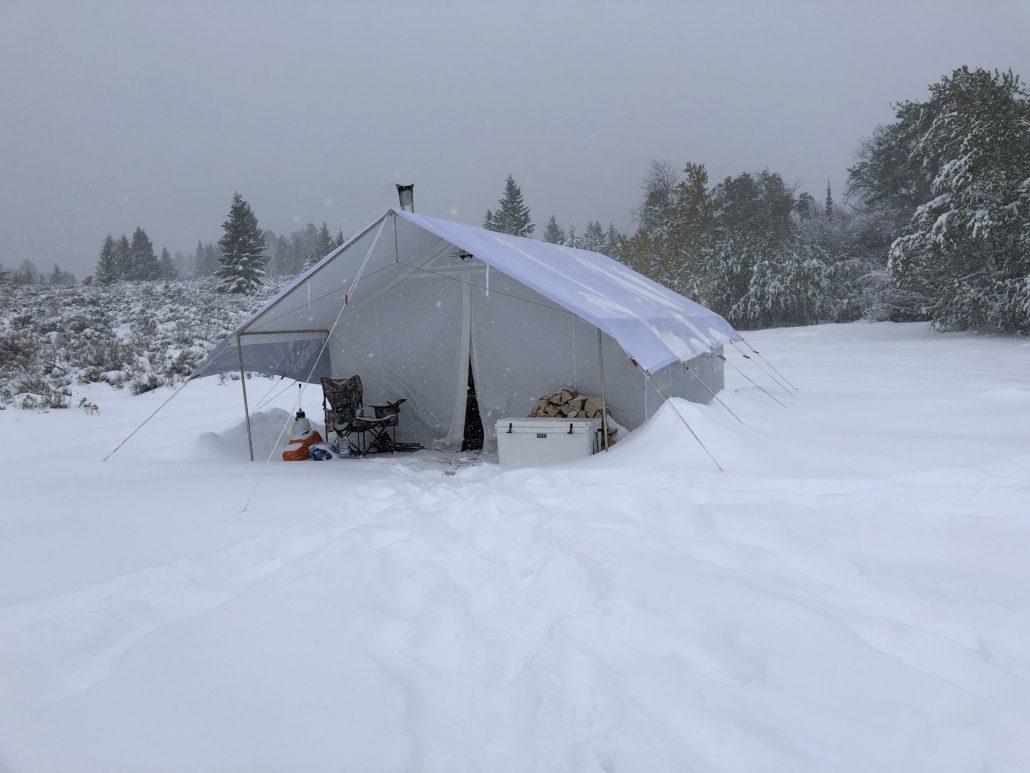
FAQs:
Q1. How often should you waterproof your canvas tent?
A1. It’s recommended to waterproof your canvas tent once a year on average or somewhere between every six months an every two years depending on how often you use it and the weather conditions. If you notice any signs of water ingress, such as damp spots or puddles, reapply the waterproofing solution immediately.
Q2. Can you use any waterproofing solution for a canvas tent?
A2. No, not all waterproofing solutions are suitable for canvas tents. You need to get one that is either for cotton, polyester, or cotton-poly. Additionally, usually you will want something more heavy duty than what is applied to nylon dome tents, for example.
Q3. Can you use a waterproofing spray instead of a solution?
A3. Yes, waterproofing sprays can be used to waterproof a canvas tent, but it’s important to choose a high-quality product specifically designed for canvas or outdoor gear. Follow the instructions on the label carefully, and be sure to cover the entire tent, including the seams and any areas prone to water ingress.
Q4. How long does the waterproofing solution last on a canvas tent?
A4. The durability of the waterproofing solution depends on the product used and the weather conditions. In general, a properly applied waterproofing solution can last for up to six months to two years. However, it’s important to reapply the solution as soon as you notice any signs of water ingress, such as damp spots or puddles.
Conclusion
Waterproofing a canvas tent is an essential step in ensuring a comfortable and dry camping experience. By following the above steps and using a high-quality waterproofing solution, you can protect your tent from water damage and extend its lifespan. Remember to check for any leaks before going on a camping trip, and store the tent properly to prevent mildew and mold growth. With proper care and maintenance, your canvas tent can provide many years of enjoyable outdoor adventures.
